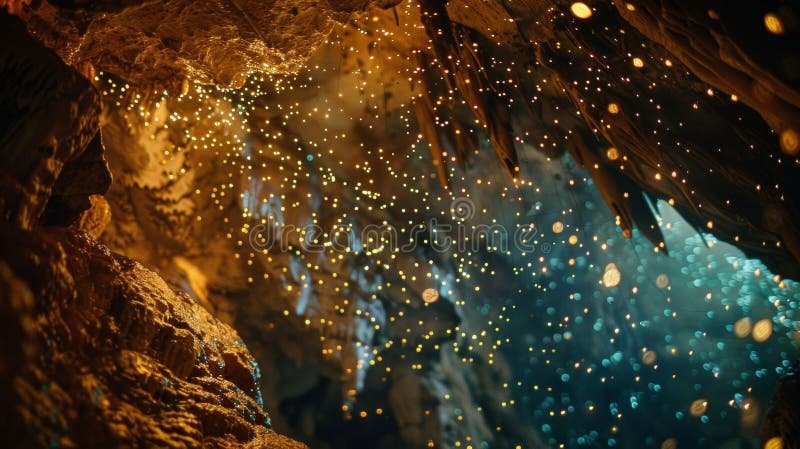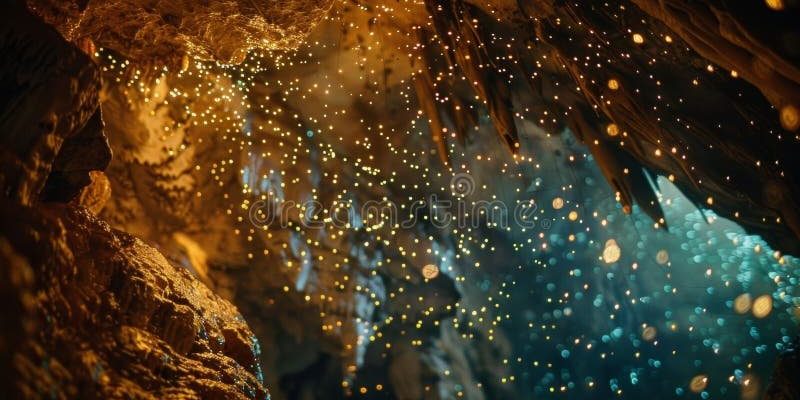
Think of moisture in forests like a cozy blanket. It wraps around everything, helping plants grow, providing habitats for creatures, and even assisting glow worms in their remarkable life cycle. This cozy environment isn’t just a backdrop; it’s a crucial player in the forest’s drama. So, let’s dive into the world of glow worms and see how moisture makes a difference in their lives and, by extension, the ecosystem around them.
What Are Glow Worms?
Let’s get to know our glowing friends first. The term “glow worm” actually refers to different species of insects that emit light, primarily as larvae or adult females. One of the most well-known types is the Lampranthus genus, often spotted in damp, shaded areas of forests. These critters are fascinating not just for their glow but for how they use it to attract food and mates.
Most glow worms glow in shades of green or blue, creating a beautiful spectacle. So, why do they glow? It’s a survival tactic! The light helps lure unsuspecting prey, like small insects, into sticky silk threads they create. Imagine a tiny fairy trap, where the glow acts like a beacon, signaling dinner time.
This natural glow is more than just a pretty light show; it’s a sign of health in the ecosystem. A thriving glow worm population often indicates a rich and balanced environment. They’re sensitive to changes in their habitat, especially moisture levels, which we’ll explore next.
The Importance of Moisture in Forests
Moisture levels in a forest are like the pulse of its ecosystem. They help dictate everything from which plants can thrive to which animals will call that area home. Forest moisture primarily comes from rainfall, humidity, and even the surrounding bodies of water. When you think about it, moisture is like the forest’s lifeblood — nourishing and sustaining all forms of life.
Here’s the thing: the moisture level affects the soil’s nutrients and how well plants can grow. A well-hydrated forest can support a diverse range of flora, which, in turn, creates habitats for many creatures. Think about it: a thriving undergrowth gives glow worms places to hide, hunt, and mate, making moisture essential not just for plants but for whole communities of insects and animals.
Interestingly, forests can retain moisture in several ways. Big trees can create shade, reducing evaporation, while leaf litter on the forest floor helps keep the ground damp. All these elements work together to form a balanced ecosystem.
How Moisture Affects Glow Worms
Moisture levels play a significant role in the life cycle of glow worms. They thrive in humid environments, usually found in caves, under rocks, or within dense vegetation. When moisture is high, it creates the ideal conditions for glow worms to live and reproduce.
If the environment becomes too dry, it can hinder their ability to find food and even threaten their survival. Without enough moisture, the plants they depend on weaken, leading to fewer insects in the area. That’s a tough situation for glow worms, as their food sources dwindle.
Conversely, if moisture levels are too high, it can result in flooding or other environmental stressors, which can also harm these delicate insects. So, maintaining that sweet spot of moisture is crucial for their survival. Think of it as a balancing act—too much or too little can lead to problems.
Measuring Moisture Levels in Forests
Scientists have various ways to measure moisture levels in forests. One common method is using hygrometers, which gauge humidity in the air. Soil moisture sensors are another tool, allowing researchers to see how much water is available in the ground for plants and animals.
You might be wondering why this is important. Understanding moisture levels helps scientists predict how changes in climate can affect various species, including glow worms. If they know what moisture levels are optimal, they can set conservation efforts in place to maintain those conditions.
Additionally, looking at moisture trends over time can tell us about the health of the entire forest ecosystem. Think of moisture monitoring as a detective work of sorts—finding clues about the health of the environment can help protect these magical glow worms and the forests they call home.
The Role of Glow Worms in the Ecosystem
Glow worms are not just beautiful; they contribute to the health of their forest ecosystems. By attracting and trapping insects, they help control pest populations. This balance is essential for the overall health of the environment. If glow worms weren’t present, there might be an overpopulation of certain insects, which could disrupt plant life and impact other animals.
Additionally, as glow worms grow, they become food for various creatures, from birds to small mammals. This means they play a part in the food chain, transferring energy and nutrients up the chain. So, every time you see a glowing worm, remember it’s part of a larger story involving plants, animals, and the moisture that holds it all together.
In essence, glow worms serve as indicators of forest health. A healthy population often means a thriving ecosystem, while a dwindling number signals potential issues. Protecting moisture levels helps maintain their populations and the overall balance of forest life.
Conservation Efforts for Glow Worm Habitats
With the rising threats of climate change and habitat destruction, conservation efforts for glow worms and their habitats are more critical than ever. Several initiatives focus on preserving the unique ecosystems where glow worms thrive. These efforts often revolve around maintaining moisture levels in forests, which translates to protecting their habitats.
One effective approach is reforestation, where native plants are restored to areas that have been cleared. These trees help retain moisture, ensuring that glow worms and other forest creatures have the environment they need to survive. Efforts also include monitoring water quality and habitat health to see how these factors impact the insect population.
Local communities can also play a significant role. By becoming aware of the delicate nature of forest ecosystems, they can take steps to reduce pollution and promote healthy land use practices. Education is a powerful tool; when people understand the importance of glow worms and moisture levels, they’re more likely to protect these precious habitats.
Connecting with Nature Through Glow Worms
Finding glow worms in their natural habitat can be a magical experience. Imagine walking through a quiet forest at night, the soft glow of these creatures lighting your path. It’s a moment that connects us to the beauty of nature and the importance of preserving it.
Watching these little insects reminds us of our role in the ecosystem. Each of us can contribute to maintaining the delicate balance of moisture levels and protecting the habitats that support glow worms and countless other species. Simple actions, like supporting conservation efforts or being mindful of our environmental impact, can make a difference.
As we learn more about glow worms and their needs, we also gain insight into our responsibilities as stewards of the environment. It’s about understanding that every creature plays a part in the grand tapestry of life in the forest.
In conclusion, glow worms and their relationship with moisture levels in forests reveal a fantastic story of interconnectedness within nature. By understanding and protecting these enchanting creatures and their habitats, we ensure that the magic of glow worms continues to light up the forests for generations to come.

